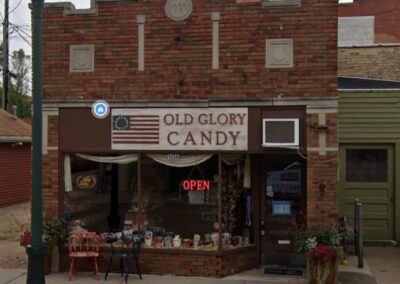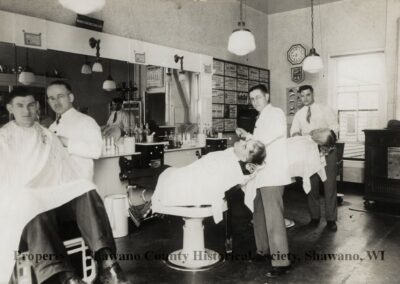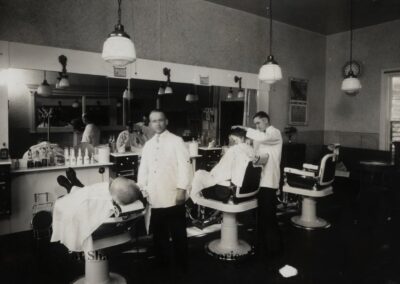Location
Photo Gallery
A Brief History
Boehm Barber Shop
108 S. Division St.
Shawano, Wisconsin
There were several barber shops in downtown Shawano in the early 1900s. Built in 1929, this building was the home of the Boehm Barbershop for many years. Barber services were a socially important service provided in the central commercial district. They were located in downtown storefronts to capitalize on customers inclined to combine a haircut or shave with other downtown activities. Like the tavern, barbershops provided an informal meeting place, where the necessity of waiting for a personal service lent itself to discussion and interaction in a manner that would have been discouraged in most retail-oriented operations.
Although several barbers operated out of several storefronts in the district, two have particularly significant ties to contributing buildings. The Boehm brothers, Joe and Louis, operated a barber shop out of this building at 108 E. Division St. from its construction in 1929 through the period of historic significance, while William Kriefall, who had previously been the house barber at the Murdock Hotel, opened his shop in his new building at 149 S. Main in 1935. He stayed in this building until 1962. Due to the relatively unobtrusive nature of such businesses, few details can be determined about these establishments’ operations, but it may be assumed that each catered to a group of regular customers that included predominately local city residents, along with a few of the more affluent farmers in the area.
This building has also been the home of a retail candy and nutrition businesses.
From the 1999 National Register of Historic Places Registration application:
This storefront, one of the smallest and most intact in the district, is appended to the rear of 200 S. Main St. by a recessed ell or passageway. Built as a barbershop, this one-story brick veneered building has a stepped concrete-edged facade with a half-circle arch at its center, under which lies a round concrete date stone. The date stone is flanked on either side by vertical concrete members set into the brick, each of which are surmounted by a small, plain, square form; these features are in turn flanked on the external sides by two square concrete panels inset with an unadorned shield or crest.
Beneath these features extends a simple molded storefront cornice or belt course, which in turn rests upon the storefront piers and transoms. The two brick piers have simple concrete bases and are defined in their upper portions by an inverted-cross pattern of concrete set into the brick immediately below the piers’ simple capitals. These capitals and the crosses’ horizontal members align with the upper and lower edges of the storefront transom, which extends across the storefront facade. The transom glass consists of six panes of translucent, slightly scored glass in molded copper frames; all are entirely intact with the exception of the westernmost, which has been replaced by a portable air conditioner. The storefront itself consists of two plate-glass panes facing the sidewalk and two narrower panes angled from the plane of the others into the building, where they are adjoined by an original wood-and-glass door. The storefront panes are framed with molded copper members, and rest upon brick bulkheads. With the exception of the one replaced pane of transom glass, this building is highly intact and has exceptional integrity.



